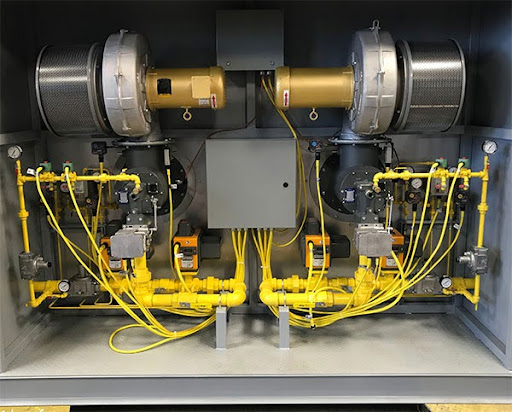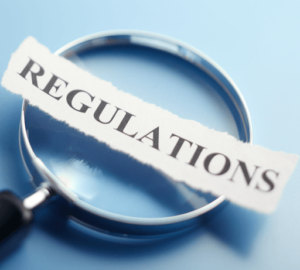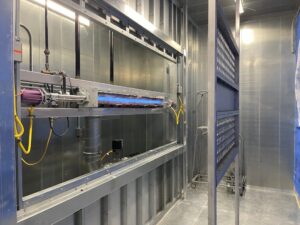Navigating the Challenges of Integrating New Equipment with Existing Systems
 Upgrading combustion systems can be a daunting task for facility managers. Whether replacing burners, control systems, or other critical components, integrating new equipment with existing infrastructure presents challenges that, if not managed correctly, can lead to inefficiencies, downtime, and increased costs. In this post, we’ll explore key considerations and best practices to ensure a seamless transition when upgrading combustion system equipment.
Upgrading combustion systems can be a daunting task for facility managers. Whether replacing burners, control systems, or other critical components, integrating new equipment with existing infrastructure presents challenges that, if not managed correctly, can lead to inefficiencies, downtime, and increased costs. In this post, we’ll explore key considerations and best practices to ensure a seamless transition when upgrading combustion system equipment.
Compatibility Considerations: Hardware and Software Integration
One of the most significant factors in upgrading combustion systems is ensuring new components are compatible with existing hardware and software. Many older combustion systems operate on legacy platforms that may not easily communicate with modern digital controls, sensors, or automation systems.
To navigate these challenges:
- Assess System Compatibility Early – Before purchasing new equipment, review the technical specifications of your current system and compare them with the new components. Pay special attention to communication protocols, control interfaces, and power requirements.
- Plan for Adaptation – If direct compatibility is not possible, consider using interface modules or conversion kits to bridge the gap between old and new systems. In some cases, upgrading additional components like control panels or fuel delivery systems may be necessary to ensure seamless integration.
- Account for Future Expansion – Choose equipment with open protocols and flexible integration capabilities to accommodate future system modifications or expansions.
Collaboration with Vendors: Ensuring Vendor Support for Integration
Effective collaboration with equipment vendors is crucial for a successful upgrade. Vendors bring valuable expertise in configuring and integrating their products into existing systems, helping to minimize risks and avoid unexpected issues.
To make the most of vendor partnerships:
- Engage Vendors Early – Work with equipment suppliers from the start of the project. Provide them with detailed information about your existing system so they can recommend the best solutions and identify potential integration challenges.
- Request Customization Support – Some vendors offer customized solutions or firmware updates that improve compatibility with older combustion systems. If standard products do not fully meet your needs, inquire about available modifications.
- Establish Ongoing Support Agreements – Ensure that vendors offer technical support, remote diagnostics, and training for your maintenance team. This can help address any unexpected integration issues after installation.
Testing and Calibration: Ensuring New Components Work with Older Systems
Once the new equipment is installed, thorough testing and calibration are essential to verify proper functionality and optimize performance. Skipping or rushing this process can result in inefficient combustion, increased emissions, or equipment failures.
Key steps for testing and calibration:
- Conduct a Dry Run Before Full Integration – Before putting the system into full operation, test the new equipment in isolation to verify its performance under controlled conditions.
- Perform a System-Wide Integration Test – Once the new components are connected to the existing system, conduct a full-scale test to ensure communication, control logic, and safety interlocks function correctly.
- Calibrate for Optimal Efficiency – Fine-tune fuel-air ratios, burner settings, and control parameters to optimize combustion efficiency. Use emissions monitoring equipment and thermal sensors to validate performance.
- Document and Train – Maintain detailed records of the integration process, including calibration settings, troubleshooting steps, and best practices. Train operators and maintenance personnel on any new procedures to ensure long-term success.
Engineered Combustion Systems is Your Source Combustion System Integration Support
Integrating new combustion equipment with existing systems requires careful planning, collaboration, and rigorous testing. By addressing compatibility considerations, working closely with vendors, and prioritizing thorough testing and calibration, companies can maximize efficiency, minimize downtime, and ensure long-term system reliability. Investing the time and effort upfront will pay off in improved performance, regulatory compliance, and operational cost savings.
For expert support and a wide selection of dependable, high-quality combustion components, turn to ECS. Their team of experienced experts can help guide you through the integration process, ensuring your new equipment seamlessly connects with your existing system for optimal performance. Contact us to discuss your project.

 The Role of Environmental Regulations in Combustion System Design
The Role of Environmental Regulations in Combustion System Design  Optimizing Combustion System Efficiency for Industrial Processes
Optimizing Combustion System Efficiency for Industrial Processes